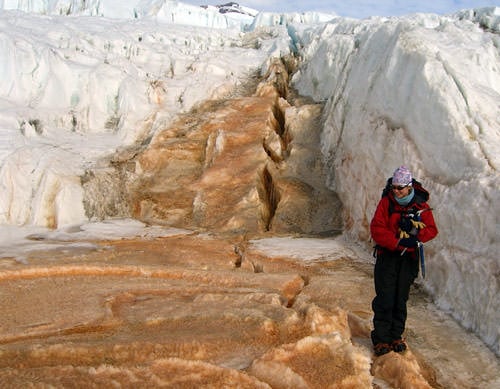[/caption]
Scientists have found an ancient ecosystem below an Antarctic glacier, one that has survived millions of years without light or oxygen in a pool of brine. The ecosystem contains a diversity of bacteria that thrive in cold, salty water loaded with iron and sulfur. The water averages 14 degrees Fahrenheit, but doesn't freeze because the water is three or four times saltier than the ocean. Scientists who discovered and studied the ecosystem found the bacteria convert the iron and sulfur into food. Life found in extreme conditions like this could explain how life might exist on other planets and serve as a model for how life can exist under ice. Some scientists have proposed that life could possibly be found under the outer ice layer of Jupiter's moon Europa.
Described in the April 17 issue of
Science
, the ecosystem lives trapped below Taylor Glacier and next to frozen Lake Bonney in eastern Antarctica, said John Priscu a longtime Antarctic researcher. Despite their profound isolation, the microbes are remarkably similar to species found in modern marine environments, suggesting that the organisms now under the glacier are remnants of a larger population that once occupied an open fjord or sea.
Jill Mikucki, lead author of the article, added that life below the glacier may help scientists answer questions about life on "Snowball Earth," the period when large ice sheets covered the Earth. "This briny pond is a unique sort of time capsule from a period in Earth's history," she said. "I don't know of any other environment quite like this on Earth."
Priscu said researchers discovered the bacteria while investigating Blood Falls, a curious blood-red feature that flows from Taylor Glacier. They learned that the falls are red because they draw water from an iron rich pool. They discovered different types of bacteria in their samples; the most common bacteria in called Thiomicrospira arctica.
The exact size of the subglacial pool is not known precisely, but it is thought to rest under 400 meters of ice some four kilometers from its tiny outlet at Blood Falls. The researchers can't drill down to the pool because the glacier is too thick and the pool is too far back from the glacier's nose, Priscu said.
Sources:
EurekAlert
,
PhysOrg
 Universe Today
Universe Today
